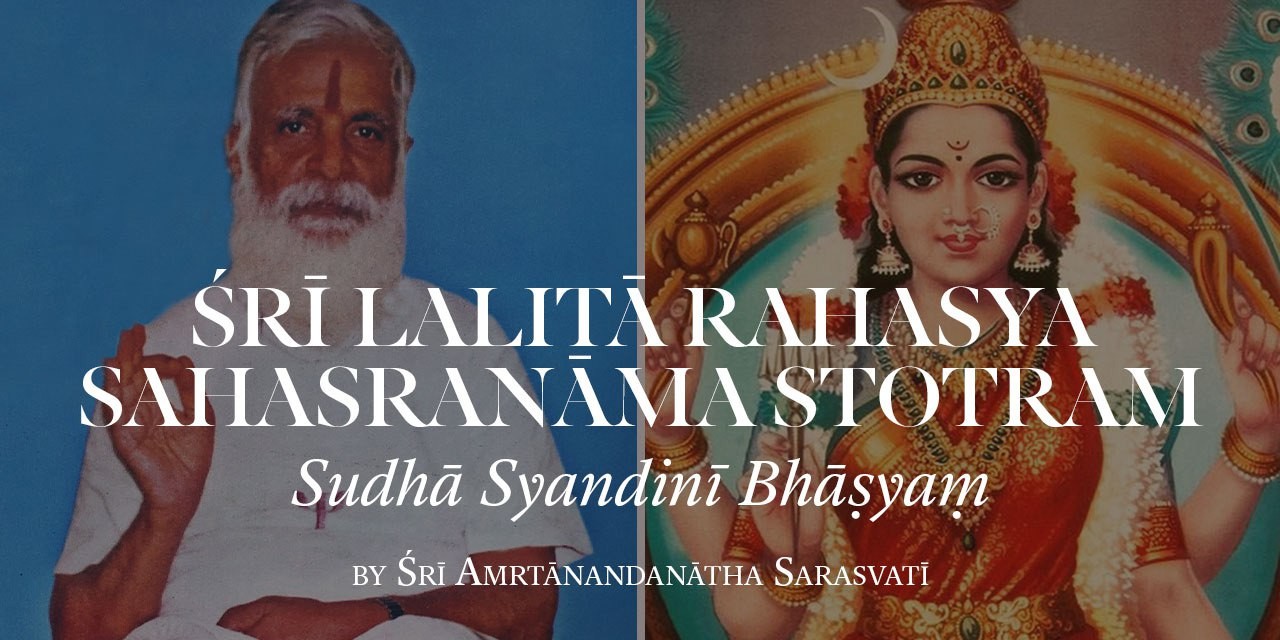- Edited

8) Rāgasvarūpapāśāḍhyā
In the first hand, upper left, She holds the noose, an instrument for binding. The nature of this transcendental noose is not thread, as is common, but attachment! Lalitā wishes to create an ego structure out of consciousness, so She binds a part of the consciousness by a very subtle thread called attachment, or desire. Desire is the immortal thread She uses to bind pure awareness which can in no other way be bound. The first structure, the deepest and closest to the divine, almost a hand of the divine, is desire. Out of desire ego is born, which then separates the cosmos from the ego itself. The egotistic view, the man-centered view is that ego and cosmos are co-creations. Also, they are coterminous. But the cosmic (ego) centered view is that the individual ego is a substructure that forms like drops on waves in an ocean in the cosmos. The hands are the space-time complex.
They are the powers of Viṣṇu and Śiva. In sandhyāvandanam, a canonically sacred text which all brahmins are supposed to recite is the fundamental statement of the exchangeability of Śiva and Viṣṇu. It is said: Śiva is the heart of Viṣṇu and Viṣṇu is the heart of Śiva. In their exchange lies this world. In the transformation of time into space and of space into time through velocity is this world created. This exchange is the basis of all interactions. The interactions are basically of two kinds, attractive and repulsive. The attractive interactions are the basis of desire, in a generalized form. This is the noose. The repulsive interactions?
Source: Śrī Amṛtānandanātha Saraswatī "Sudhā Syandinī Bhāṣyaṃ" Typed Manuscript
(an incomplete commentary on Lalitā Sahasranāma)

